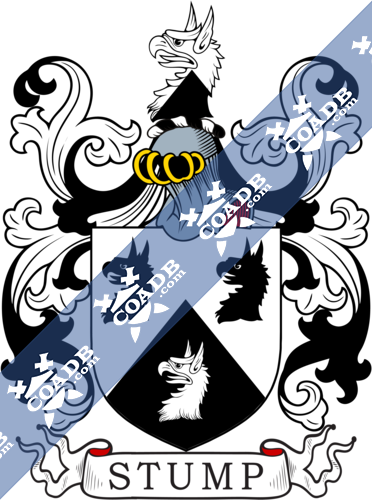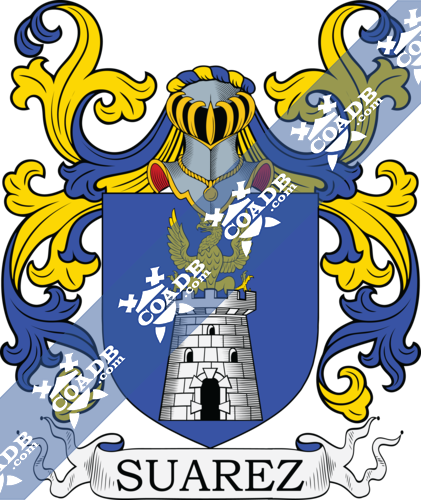Stump Family Crest, Coat of Arms and Name History

Stump Coat of Arms Gallery
Don’t know which Coat of Arms is yours?
We can do a genealogical research. Find out the exact history of your family!
Learn MoreSTUMP
The surname Stump is thought to be the Anglicized version of the German name Stumpf of Stumph. In this context the name would be topographical as it would have been used to identify someone who lived near a noticeable tree stump. There is also the possibility that the name may also refer to a maker of coins and currency. In times prior to the middle ages, the manufacturing of currency was often sourced out to local licensed craftsmen, so in this context the surname would have been occupational.
Various spellings of the name can be found in the medieval and ancient records, a fact which is attributed to a lack of guidelines used for spelling at that time and the fact that a large number of the scribes charged with record keeping, spelled phonetically. What may have sounded on way to one person may have sounded different to another. Some of the early variations include; Stump; Stampf; Stampe; Stamp; Stumph; Stemp; and Stempe among others. One of the earliest records of someone bearing a variation of the name, John de Stampes, can be found in tax rolls of London dated 1191. The tax rolls, were a series of census and tax records kept by the English Treasury by order of King Richard I, with the oldest dating back to the 12th century. These documents are considered the oldest concentric set of records documenting English governance in the United Kingdom spanning a period of over seven centuries, these records have proven invaluable to researches over the years.
The use of surnames did not come into vogue in England until after the Norman invasion. Most residents in the small settlements and villages which existed during earlier eras across most of the British Isles, found little need for surnames as everyone within these communities knew each other and a given name would usually suffice. However, as communities grew and people began to migrate on a larger scale, the Norman aristocracy’s penchant for using surnames seemed to serve at least two practical purposes; it allowed for the distinguish of individuals who shared common given names, and it gave governments a reliable way to track people for tax and census purposes.
Those not of the noble class would often be identified by their given name plus their occupation while others may have been identified by their given name and one of their parent’s names. There was almost a limitless supply from which surnames could be formed. In addition to the use of patriarchal/matriarchal names or reference to the individuals occupation, there were things such as defining physical traits, a familiar geographical location or a topographical landmark found near the individual’s home or birthplace, the name of the village in which the person lived, and so much more. Over the course or time, surnames came to represent not just individuals but whole families.
With the discovery of America, and the addition to the British Commonwealth of countries such as Canada, Australia, and New Zealand, immigration to these new worlds was inevitable. Some of the first recorded immigrants to America bearing the surname or any variation of the spelling were Thomas Stump who arrived in 1635 and settled in Virginia. John Stump landed and settled in Maryland in 1738, Christoffel Stump landed in Pennsylvania in 1741, and Adam Stump landed and settled in Pennsylvania in 1743. One of the first settlers to Canada was Michael Stump who settled in New Brunswick in 1785.
Worldwide, the highest concentration of people with the surname Stump are found in the United States, Switzerland, Germany, Canada, and the United Kingdom. State by state, the largest percentile of those with the surname Stump is in Indiana, Virginia, and West Virginia.
There are many notable people named Stump. Felix Stump achieved the rank of admiral in the United States Navy and was Commander of the United States Pacific Fleet from 1953 until 1958.
Stump attended the United States Naval Academy, received flight training at the Naval Air Station in Pensacola, Florida, and studied Aeronautical Engineering at Massachusetts Institution of Technology (MIT).
Stump was a veteran of World War I and World War II. During his years of service he received two Navy Crosses, the Navy Distinguished Service Medal, the Army Distinguished Service Medal, three Legion of Merit awards, and the Silver Star.
Blazons & Genealogy Notes
(Malmesbury, co. Wilts). Per chevron argent and sable three griffins’ heads erased counterchanged. Crest—A griflln’s head erased per chevron argent and sable.







